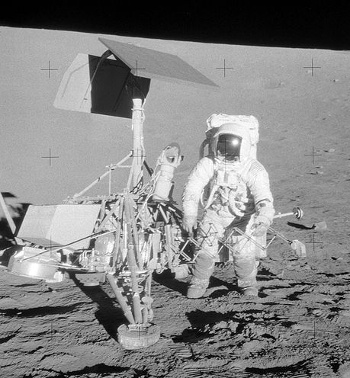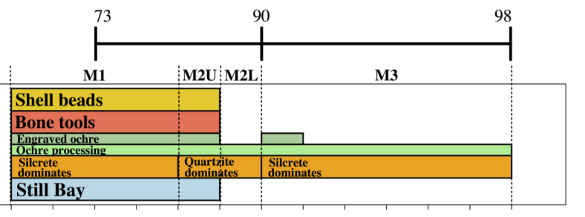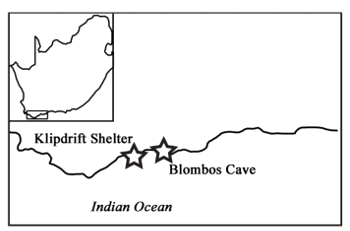Forced Innovation
November 14, 2016
They say that
necessity is the mother of invention. Some illustrations of this can be found in
Robert M. Pirsig's 1974 book, "
Zen and the Art of Motorcycle Maintenance." This book, an exposition of the concept of "
quality" long before it became a
management fad, contains a description of an extended trip by
motorcycle.
There are many
plot elements in the book that relate to the
repair and maintenance of an older motorcycle. In one such repair, pieces of
tin cans are used as
shim stock, which is something that I've done on occasion, although not for a motorcycle. At other times I've
violated the "right tool for the job" paradigm by using a
knife as a
screwdriver. The pointed tip of a
pocket knife works well for
philips head screws.
One notable attempted repair with the tools at hand occurred during the
Apollo 12 lunar exploration mission. Apollo 12 had the
first color camera on the Moon. While standard color
video cameras of the period used three
imaging tubes, one each for red, green, and blue, the Apollo 12 camera used a single imaging tube in a
field-sequential color system. This camera had a
mechanical wheel containing
color filters to render a color image in sequential
frames.
Unfortunately, less than an hour into the mission,
astronaut,
Alan Bean, pointed the camera at the
Sun while mounting it on a
tripod. The intense
light rendered the imaging tube useless, and it showed an image similar to what might be expected from a stuck filter wheel. Bean was told to try to fix the camera by tapping it with a
hammer, an action that might have started a stuck filter wheel. As Bean communicated by radio, "I figured we didn't have a thing to lose. I just pounded it on the top with this hammer that I've got."[1]

Astronaut, Alan Bean, on the lunar surface, alongside Surveyor 3.
Surveyor 3, which landed on the Moon on April 20, 1967, at Mare Cognitum, was the third NASA lunar lander.
(NASA photo by Apollo 12 astronaut, Pete Conrad, via Wikimedia Commons.)
Scientists are forced to do minor
innovation while doing
experiments. In one case, my forty-five
amp furnace kept tripping its fifty amp
circuit breaker, since the breaker was
over-heating. A small stream of
lab air directed towards the breaker solved that problem. I've often
gutted pens and
markers of various sizes to make suitable
tubing connectors. In the Robert Persig tradition, I used a two-
pound-size
coffee can as a
protective enclosure.
As someone who also used a thirty
gallon trash bag as an improvised
rain coat, I would have expected that
climate change might have evoked innovation among early
humans, just as it will
assuredly do for us in the near future. However, a recent study by a large team of
archaeologists demonstrates that innovation among early,
Middle Stone Age, humans in
southern Africa was not primarily driven by climate change.[2-3] The archaeologists are from the
University of Oxford (Oxford, United Kingdom), the
University of the Witwatersrand (Johannesburg, South Africa), the
University of Bergen (Bergen, Norway), the
University of Bradford (Bradford, United Kingdom), and the
University of South Africa (Durban, South Africa).[2-3]
Climate change is a proposed primary driver of innovative behavior in humans, especially in the
Stone Age in
South Africa.[3] The so-called
Still Bay (c. 77-73 ka) and
Howiesons Poort (c. 65-59 ka)
lithic traditions of Middle Stone Age southern Africa were periods of dramatic
cultural, and
technological innovation by
Homo sapiens.[2] The proposed reasons for such innovation and its subsequent disappearance are
demography,
sea level change, and climate change.[2] Tests of the climate change
hypothesis have been difficult, since the
climate record has not previously been connected to the
archaeological record.[2]

Sudden appearance of artifacts in the Still Bay archaeological record. (Portion of figure 5A from ref. 2, licensed under the Creative Commons Attribution License 4.0.[2]
In order to establish the proper climate record, the archaeological team did
radiocarbon and
oxygen isotope dating in
shellfish,
ostrich eggshell fragments, and
faunal remains excavated from
Blombos Cave and Klipdrift Shelter.[2-3] The samples ranged in age from 98,000 to 59,000 years ago.[3] The data showed significant changes in
aridity,
rainfall,
vegetation, and
sea temperature near sites of human occupation.[2]

The locations of the Blombos Cave and Klipdrift Shelter archaeological sites.
(Fig. 1B of ref. 2, licensed under the Creative Commons Attribution License 4.0.[2]
The research team did not find a
correlation between the considerable cultural and technological innovations at the South African sites and shifts in climate.[3] Although climate change was evident, the diversity of
resources allowed humans to weather these changes. The human species appears to be highly resilient to climatic and
environmental instability, and innovation proceeds without notice of these affects.[2-3] Says
Karen L. van Niekerk, an
author of the study from the University of Bergen,
"Our research points to the fact that changes in long-distance contact, socio-cultural interactions and population movements may be just as important, or more important, for innovation as environmental drivers."[3]
This research was funded by the
Clarendon Fund of the University of Oxford, the University of the Witwatersrand, and by the University of Bergen, Norway.[2]

Archaeologists at work in Blombos Cave, South Africa.
(Photo by Magnus Haaland, University of Bergen.)
![]()
References:
- Apollo 12 Mission Log, earthtothemoon.com.
- Patrick Roberts, Christopher S. Henshilwood, Karen L. van Niekerk, Petro Keene, Andrew Gledhill, Jerome Reynard, Shaw Badenhorst, and Julia Lee-Thorp, "Climate, Environment and Early Human Innovation: Stable Isotope and Faunal Proxy Evidence from Archaeological Sites (98-59ka) in the Southern Cape, South Africa," PLoS ONE, vol. 11, no. 7 (July 6, 2016), Document no. e0157408, doi:10.1371/journal.pone.0157408. This is an open access publication with a PDF file available here.
- Technology and innovation not driven by climate change, The University of Bergen Press Release, September 1, 2016.
Permanent Link to this article
Linked Keywords: Necessity is the mother of invention; Robert M. Pirsig; 1974; Zen and the Art of Motorcycle Maintenance; quality; management fad; motorcycle; plot element; repair and maintenance; tin can; shim stock; "right tool for the job"; paradigm; knife; screwdriver; pocket knife; philips head screw; Apollo 12; Moon; lunar; exploration of the Moon; Apollo TV camera; first color camera on the Moon; video camera; video camera tube; imaging tube; field-sequential color system; mechanical wheel; color filter; frame; astronaut; Alan Bean; Sun; tripod; light; hammer; lunar surface; Surveyor 3; Mare Cognitum; NASA; lunar lander; Wikimedia Commons; scientist; innovation; experiment; ampere; amp; furnace; circuit breaker; thermal runaway; over-heating; compressed air; lab air; gut; pen; marker pen; tubing; pound; coffee; protective enclosure; gallon; trash bag; rain coat; paleoclimatology; climate change; human; global warming; near future; archaeology; archaeologist; Middle Stone Age; southern Africa; University of Oxford (Oxford, United Kingdom); University of the Witwatersrand (Johannesburg, South Africa); University of Bergen (Bergen, Norway); University of Bradford (Bradford, United Kingdom); University of South Africa (Durban, South Africa); Stone Age; South Africa; Stilbaai; Still Bay; Howiesons Poort; stone tool; lithic; culture; cultural; technology; technological; Homo sapiens; demography; sea level; hypothesis; climate record; artifact; Creative Commons Attribution License 4.0; radiocarbon dating; oxygen isotope; shellfish; ostrich; eggshell; fauna; faunal; Blombos Cave; arid; aridity; rain; rainfall; vegetation; ocean; sea; temperature; correlation; natural resource; environment; environmental; Karen L. van Niekerk; author; Clarendon Fund; South Africa; Magnus Haaland.